What to Know
- You’ve probably heard about the XBB.1.5 variant; it’s the latest “most transmissible COVID variant yet” and appears to be better at binding to human cells, which may make it more adept at infecting
- There’s no evidence at this point that the strain, a combination of two prior omicron subvariants, is more lethal or more likely to cause COVID complications, but as a top White House official said last week, if you haven’t been vaccinated or infected lately, your protection probably isn’t so good
- Nowhere is XBB.1.5 more prevalent than in the northeastern United States, according to the CDC — and rolling hospitalization and death rates, along with cases, are climbing accordingly
COVID-19 hospitalizations in New York and New Jersey have soared to 11-month highs as the most transmissible variant yet, a combination of two prior omicron strains, fuels yet another infection wave nearly three full years into the pandemic, the latest federal health data show.
Deaths are also climbing, with weekly fatality reports for both states currently at their highest levels since early last year, according to the CDC. In New York City, the rolling COVID fatality average is the highest it’s been since February 2022, while rolling hospitalizations are at a height not seen since the downswing of the initial omicron wave.
CDC COVID guidelines say face masks should be worn across the board in New York City, Long Island and much of the Hudson Valley, given the high spread rate. And the entire state of New Jersey is at the agency’s highest risk level, its latest data shows. While elected officials and their health departments have advised people to follow those guidelines, especially if they’re more vulnerable in terms of age or underlying conditions, no new mandates have been issued.
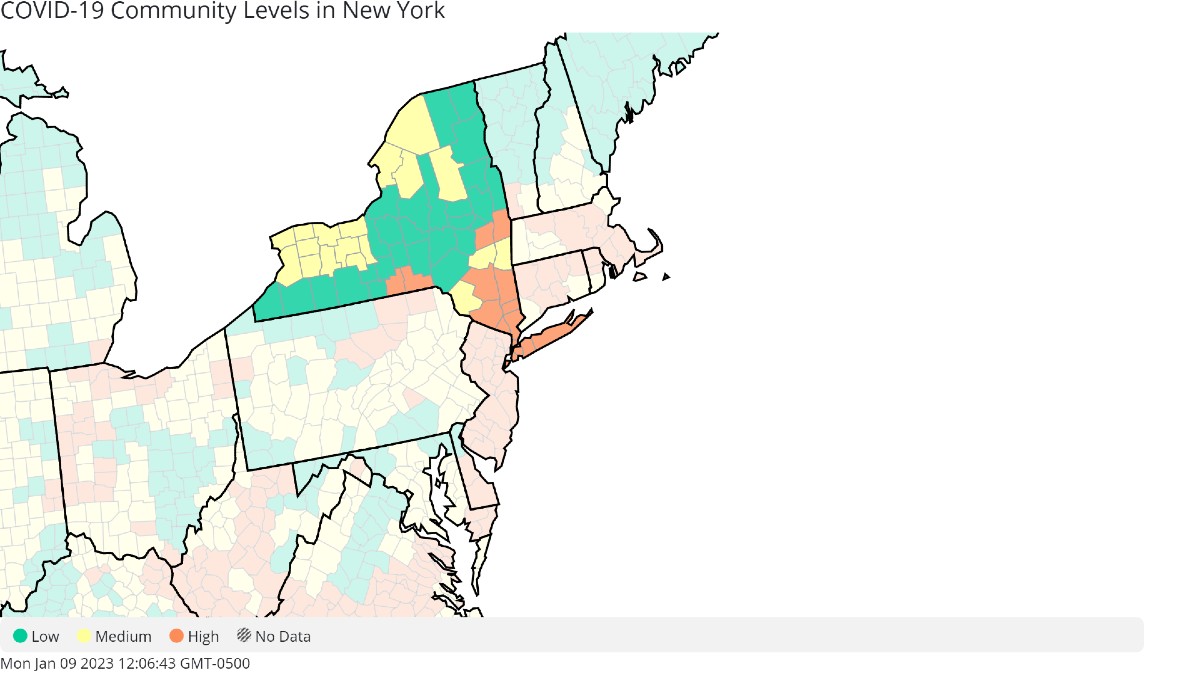
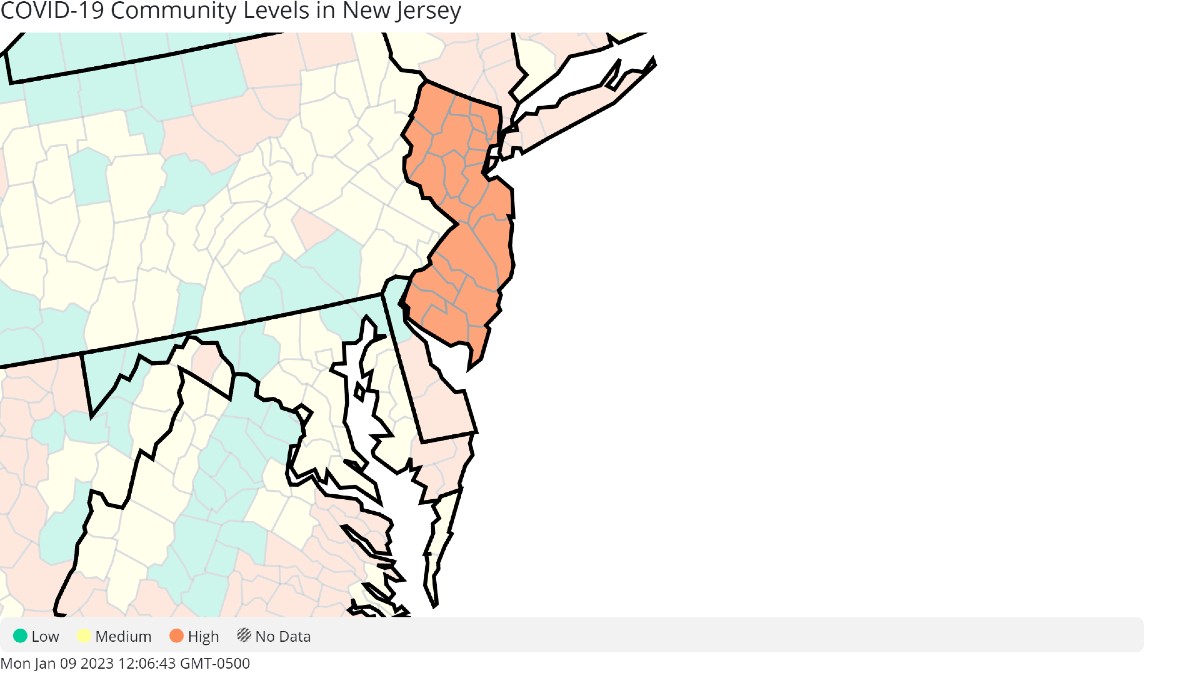
And no new mandates are expected, either, at this point in the pandemic.
New York Gov. Kathy Hochul and New Jersey Gov. Phil Murphy, both of them Democrats, are each set to deliver their State of the State addresses on Tuesday. It remains to be seen whether the ongoing COVID response will once again play a feature role in those speeches. Given these charts, the odds are fairly likely.
NEW YORK STATE COVID TRENDS (via CDC)
HOSPITALIZATIONS
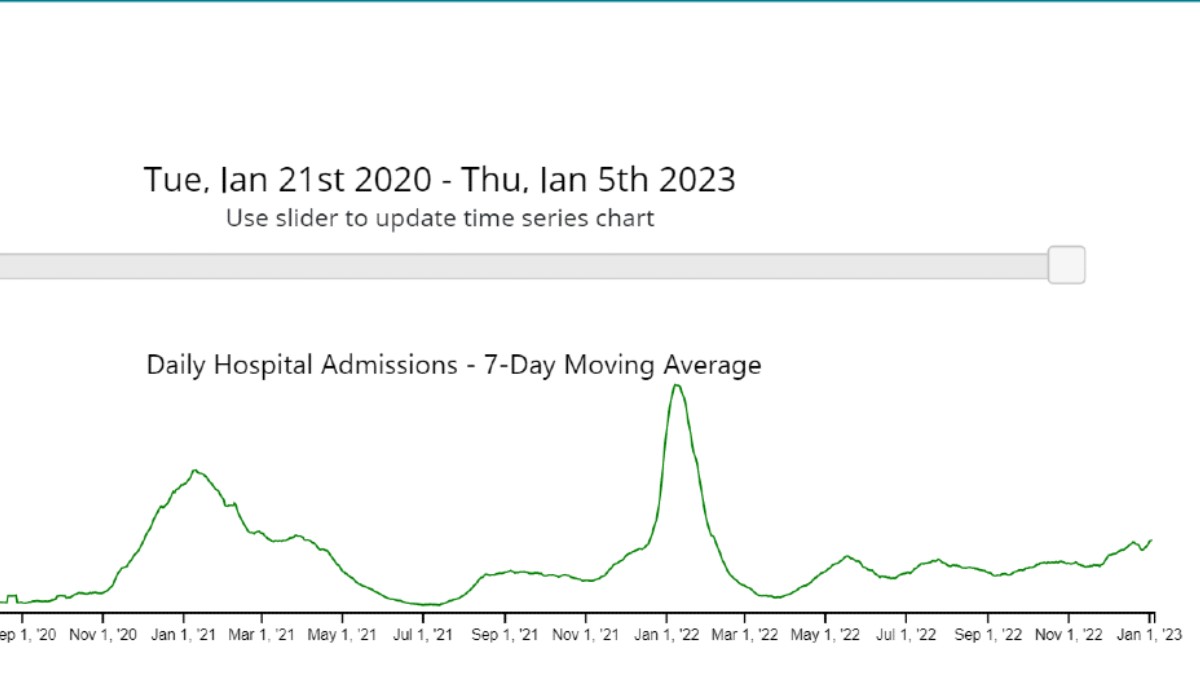
CASES AND DEATHS
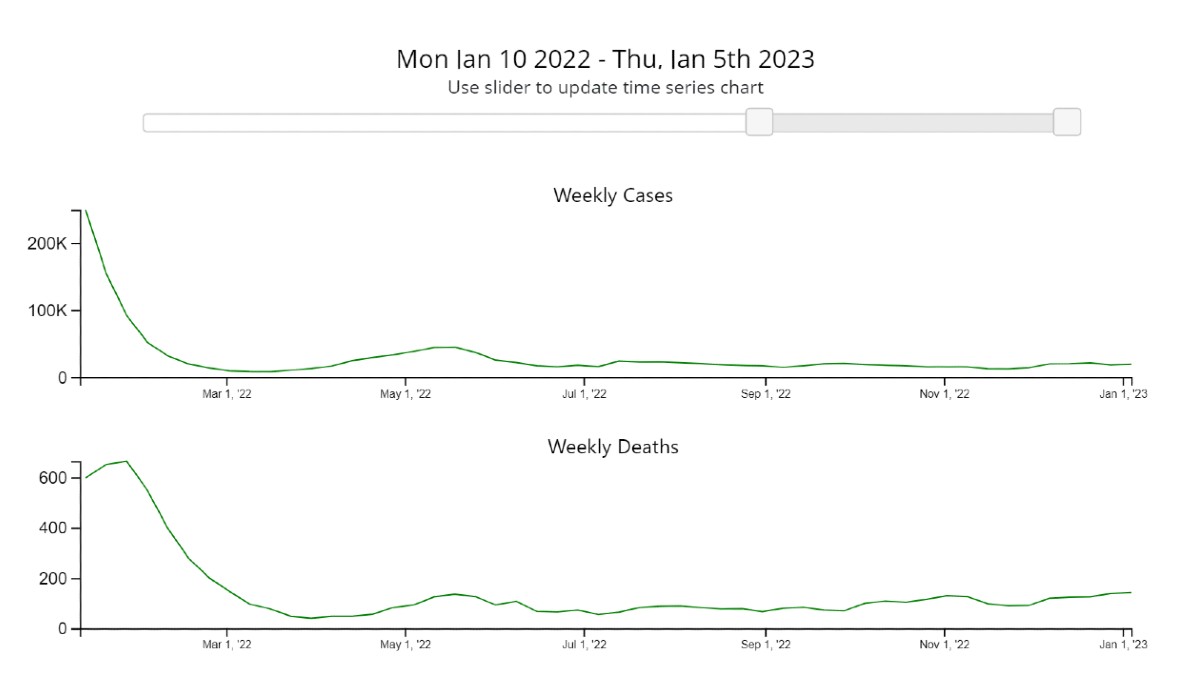
Last week, New York state’s Department of Health announced the XBB.1.5 variant is far and away the most dominant strain locally, accounting for more than 50% of statewide infections. That share is likely considerably higher, given the relatively low proportion of positive tests that undergo the exhaustive genetic sequencing process to isolate variants.
The same can be said for New Jersey, where the 38.4% share of sequences cases tied to XBB.1.5 reflects data not updated since mid-December. In New York City, where data also lags, XBB.1.5’s prevalence is likely well above the 68% share that the health department last updated on Christmas Eve.
NEW JERSEY COVID TRENDS


The latest CDC data suggests that XBB.1.5 is spreading in the northeastern United States at a much higher rate than the rest of the country, accounting for up to 81% of cases in the region comprising New York and New Jersey compared with a 43% high estimate for the nation.
While there is “not yet clear evidence,” according to New York state, that XBB.1.5 significantly affects COVID’s virulence or disease severity, early data does indicate it is more infectious than other circulating variants. The fact it has emerged at a time when both COVID and flu cases remain high is further cause for heightened caution, it says.
New York City positivity rates are bearing out the transmissibility concerns, with more than a third of neighborhoods across the five boroughs seeing those numbers in excess of 20% — and some spots topping 30% positivity.
NYC COVID VARIANT AND HOSPITALIZATION DATA

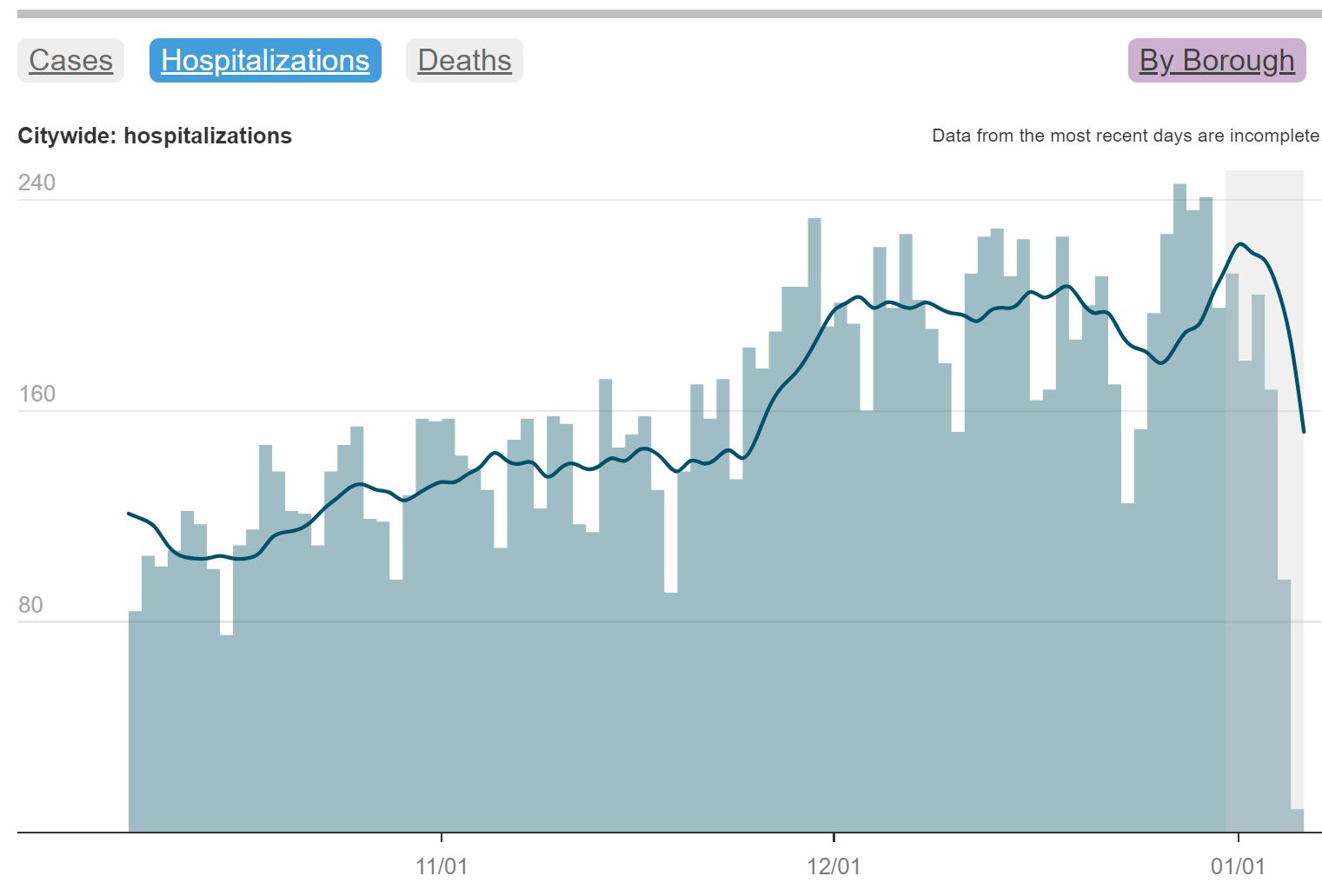
Omicron is still classified as a variant of concern according to the CDC and the World Health Organization. That strain, which first emerged in South Africa in November 2021, though likely was there earlier, is the only variant of concern currently in circulation, according to WHO.
To be a variant of concern, WHO says a strain must be associated with one or more of the following changes at a degree of global significance:
- Increase in transmissibility or detrimental change in COVID-19 epidemiology; OR
- Increase in virulence or change in clinical disease presentation; OR
- Decrease in effectiveness of public health and social measures or available diagnostics, vaccines, therapeutics
Given their level of infectiousness and ongoing mutation, WHO advises each omicron descendant be monitored distinctly. That’s what officials in New York and New Jersey continue to do as they plead with the public to double down on the mitigation factors that have proven to work since the onset of the pandemic, from hand-washing and staying home when sick to vaccination, masking up in crowded areas and getting tested regularly.
Hochul continues to urge New Yorkers — and so does the White House — to get their updated bivalent booster shots if they haven’t already (see vaccine data). The head of the White House Task Force on COVID recently underscored the point, saying if you haven’t been infected lately or had that booster, you’re likely not protected from XBB.1.5.
Overall, experts say that healthy, vaccinated people still are at much lower risk for COVID complications than immunocompromised or un- and undervaccinated people.
As Hochul said in her latest COVID update, “I urge everyone to remain vigilant and continue to use all available tools to keep themselves, their loved ones and their communities safe and healthy. Stay up to date on vaccine doses, and test before gatherings or travel. If you test positive, talk to your doctor about potential treatment options.”
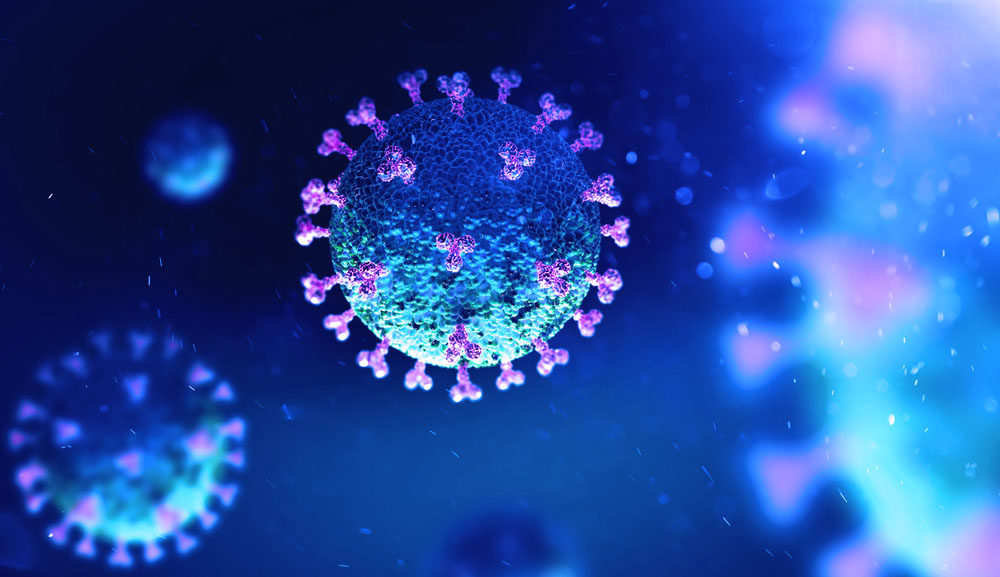

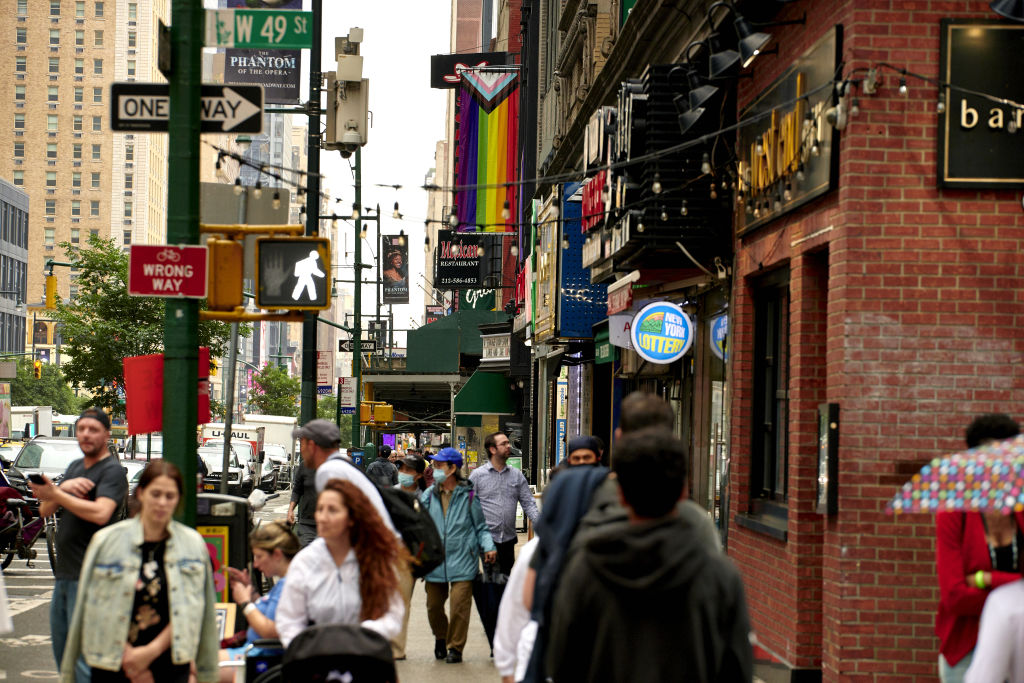

0 Comments